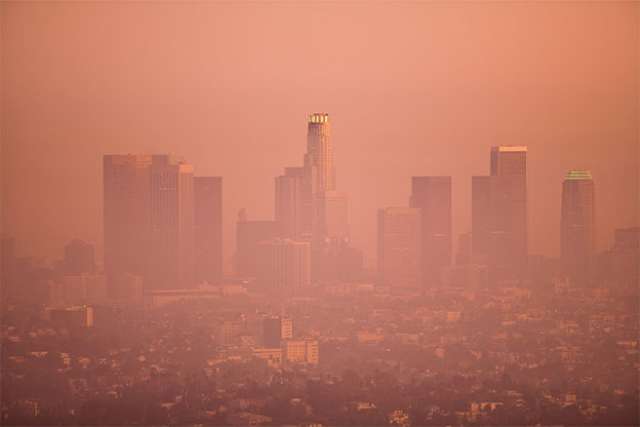This winter’s fires in Pacific Palisades, Altadena and other local areas heightened awareness of air quality issues among Southern California residents. Although the fires have abated, some health risks linger. Augustine Chung, MD, a UCLA Health pulmonologist in Westwood, and Reza Ronaghi , MD, a UCLA Health interventional pulmonologist in Santa Monica, discuss how smoke and other pollutants impact the body and steps that can reduce harm.
What are the health effects of poor air quality, including those caused by wildfire smoke?
Dr. Chung says potential damage depends on proximity to the source of poor air quality, its concentration and the duration of exposure. For example, living or working near a polluting factory or freeway poses more danger than short-term exposure to wildfire smoke. “Our bodies are built to filter out the particles that we breathe, but some microbes, dust and debris can enter the lungs and damage lung tissue,” he says. The risks vary between those who have lung diseases such as asthma, bronchiectasis and lung scarring and those who don’t. “People with sensitive lungs are most susceptible to harm because their normal clearing mechanisms are impaired, leading to worsening of their underlying disease,” Dr. Chung says. Smoke and pollution can cause acute inflammation or irritation in the airways, leading to coughing, chest pain , shortness of breath and watery eyes for both groups, but those symptoms generally dissipate a few days following exposure for those with healthy lung tissue.
What causes these effects?
Particulates measuring between 2.5 and 10 microns (less than a tenth the size of a grain of sand) can penetrate deeper into the small airways of the lungs, potentially causing more damage than larger particles. Smoke can include particles of ash or other burned materials, as well as high concentrations of harmful substances such as carbon monoxide and other volatile organic compounds. Particles smaller than 2.5 microns can enter the bloodstream, potentially leading to health issues down the line.
What steps can help minimize exposure to particles and toxins?
“During an active fire, try to get as far away as possible from areas with smoke or poor air quality,” Dr. Ronaghi says. “If that’s not possible, stay indoors as much as possible, making sure to close windows and other connections to the outside.” Use a filter rated MERV13 or higher for the home’s HVAC system and set it to recirculate mode. Dr. Ronaghi also recommends using portable air purifiers with HEPA-grade air filters and following manufacturer recommendations regarding the appropriately sized machine for the room. “While fires are burning, avoid vacuuming, dusting or other activities that might cause particles in the house to become airborne. If you need to go outside, wear a mask of at least N95 filtration.” He urges those returning to burned areas, who may be exposed to rubble or damage, to wear protective gear including masks , gloves, gowns and eyewear.
What else should people know?
“Keep an eye on air quality, especially as we get into spring and summer when pollution can become more of a factor,” Dr. Ronaghi says. Airnow.gov, run by the EPA, and the South Coast Air Quality Management District (AQMD) post air quality levels. To access South Coast AQMD information, visit AQMD.gov and select “Air Quality.” “National and local air quality has improved a lot over the past 30 years or so,” says Dr. Chung. “But it’s always wise to protect your lungs.”
Find a UCLA Health location near you.





